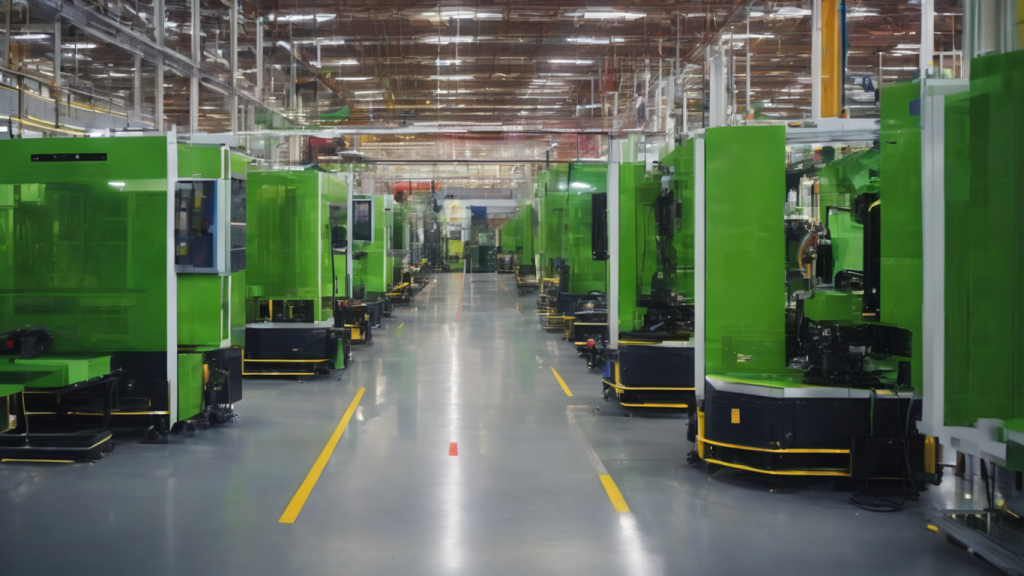Green manufacturing techniques have emerged as a cornerstone of the sustainable production revolution, offering innovative strategies to minimize the environmental footprint of industrial processes. In this comprehensive article, we delve into the world of green manufacturing and explore the key techniques that are reshaping the industry. These techniques not only reduce the environmental impact but also enhance operational efficiency and promote sustainability.
- Lean Manufacturing and Resource Optimization: Lean manufacturing principles focus on eliminating waste, reducing inefficiencies, and streamlining production processes. By adopting lean practices, manufacturers can optimize resource utilization, minimize energy consumption, and enhance overall operational efficiency. This holistic approach not only reduces environmental impact but also improves productivity and cost-effectiveness. Studies have shown that lean manufacturing techniques can lead to substantial reductions in greenhouse gas emissions and energy consumption within manufacturing facilities.
- Life Cycle Assessment (LCA) for Sustainable Product Design: Life Cycle Assessment (LCA) is a comprehensive approach that evaluates the environmental impact of a product throughout its entire life cycle. From raw material extraction to manufacturing processes, product use, and end-of-life disposal, LCA considers every stage. Manufacturers conducting LCAs gain valuable insights into environmental hotspots and can identify opportunities for improvement. This data-driven approach enables more sustainable product design and manufacturing practices by optimizing resource consumption, reducing emissions, and minimizing waste generation.
- Design for Environment (DfE) and Sustainable Product Development: Design for Environment (DfE) involves integrating environmental considerations into the product design phase. It focuses on factors such as material selection, energy efficiency, recyclability, and waste reduction. Manufacturers incorporating DfE principles into their processes create products with lower environmental footprints. This approach optimizes resource consumption, facilitates easier disassembly and recycling, and aligns product design with sustainability goals.
- Transition to Renewable Energy Sources: Embracing renewable energy sources, such as solar, wind, or hydroelectric power, is a fundamental aspect of green manufacturing. By shifting manufacturing processes to rely on renewable energy, companies reduce greenhouse gas emissions, decrease their dependence on finite fossil fuels, and contribute to a cleaner and more sustainable energy future. Numerous case studies demonstrate the substantial environmental benefits and cost savings associated with renewable energy adoption in manufacturing.
- Closed-Loop Systems for Resource Conservation: Closed-loop systems represent a proactive approach to minimizing waste generation by establishing a circular economy within manufacturing. These systems emphasize recycling and reusing materials within the production process, reducing the need for virgin resources and minimizing waste sent to landfills. Closed-loop systems help conserve natural resources, reduce pollution, and foster a more sustainable and efficient manufacturing ecosystem. Companies that implement such systems benefit from reduced costs, decreased environmental impact, and enhanced resilience in the face of resource scarcity.
- Supplier Collaboration for Sustainable Supply Chains: Effective collaboration with suppliers is integral to green manufacturing. By working closely with suppliers, manufacturers ensure the adoption of sustainable sourcing practices, promote ethical and responsible supply chains, and encourage the use of environmentally friendly materials and technologies. This collaboration enhances transparency and accountability throughout the supply chain, resulting in more sustainable products and manufacturing processes.
- Advanced Technologies and Automation: Incorporating advanced technologies, such as artificial intelligence (AI), Internet of Things (IoT), and robotics, into manufacturing processes can significantly reduce resource consumption and environmental impact. These technologies enable real-time monitoring, predictive maintenance, and energy optimization, leading to more efficient and sustainable operations. Manufacturers that embrace automation and digitalization often experience reduced waste, improved product quality, and enhanced energy efficiency.
- Circular Product Design: Circular product design focuses on creating products that can be easily repaired, refurbished, or remanufactured, prolonging their lifespan and reducing the need for new resources. Manufacturers adopting circular design principles aim to minimize product obsolescence and maximize resource utilization. By extending the life of products and components, companies contribute to waste reduction and a more sustainable economy.
- Environmental Management Systems (EMS): Environmental Management Systems, such as ISO 14001, provide a framework for organizations to systematically manage their environmental responsibilities. Implementing EMS helps manufacturers identify environmental risks, set objectives for improvement, and track progress. It enhances transparency, ensures compliance with environmental regulations, and fosters a culture of continuous improvement in environmental performance.
- Data Analytics and Sustainability Metrics: Data analytics plays a crucial role in measuring and improving sustainability in manufacturing. By collecting and analyzing data on energy consumption, emissions, and resource usage, companies can identify areas for improvement and make informed decisions. Sustainability metrics, such as carbon intensity and water usage efficiency, enable organizations to set targets and monitor their progress toward sustainability goals.
Conclusion: Green manufacturing techniques are not merely aspirational concepts; they are tangible solutions for reducing environmental impact, optimizing resource utilization, and driving positive change in the industry. By embracing these techniques, companies can transform their operations, reduce their carbon footprint, and contribute to a more sustainable and environmentally responsible future. It is through these innovative approaches that we can build a world where industry and sustainability coexist harmoniously.
By integrating these techniques into their operations, manufacturers can drive positive change, reduce environmental impact, and lead the way toward a more sustainable and prosperous future. Together, through the implementation of green manufacturing techniques, we can build a world where industry and sustainability coexist harmoniously.
